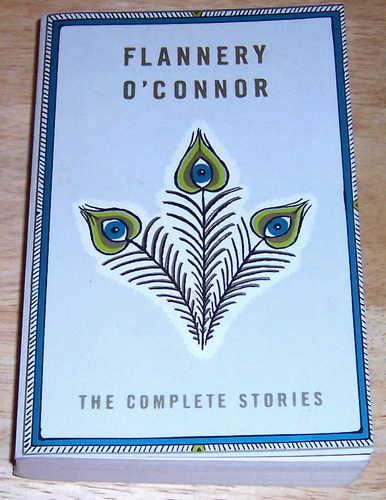Mary Flannery O’Connor lived from 1925 to 1964, a short life with its share of hardship and tragedy. When she was fifteen, her father died from systemic lupus erythematosus, the same disease which would be the cause of her death at 39 years of age. O’Connor was a fervent Catholic who struggled with religion and belief, and her fiction is largely defined by tragedy, loss and human struggle, and her spiritual contemplations.
I spent many years in Catholic school so I can relate to how a religious upbringing adds color, magic and drama to a childhood. In O’Connor’s fiction, God is a tangible force and biblical stories blend with stories of family until they hold the same weight. It was a blessing and a curse, the way that O’Connor believed, and this curse affected her characters, whether they were believers or not.
The Violent Bear it Away is the story of Tarwater, a would-be prophet kidnapped by his great uncle as a baby. Raised on a steady diet of prophesy, Tarwater finally breaks free and pursues his cousin, Rayber, a schoolteacher who had escaped the uncle to live a godless life. The conflict between religion and secularism (the paths chosen by the uncle and Rayber) are at the heart of the novel, meeting in the character of Tarwater, who now has to choose his future.
This all makes it sound like a dry read, which it is certainly not. O’Connor’s characters are crude and vivid and often, darkly humorous. She seems to bypass the veins of existence and get to the very arteries of human existence—the fear, the compassion, the primal urges. Even when the characters are displaying their worst selves, we can relate to their feelings. The story clips along, suspenseful and eerie. At times, it reads like a mystery or thriller. And throughout the novel, the atmosphere of the South seeps in…the dense, fragrant air, the buzzing of insects. Irony and tragedy and the struggles that define life. If you haven’t read either of O’Connor’s novels--this one, or Wise Blood, or any of her masterful short stories, I highly recommend. More on her life here, and an introductory study of her life and work here, written by the professor who introduced me to O’Connor’s writing.


No comments:
Post a Comment